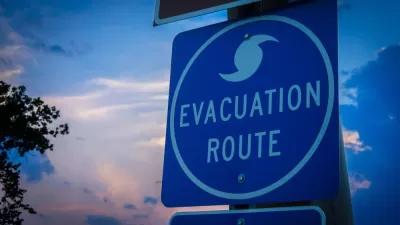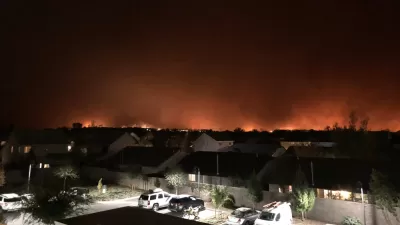Having been previously destroyed by a hurricane, Galveston has always been vulnerable, despite its sea wall. Hurricane Ike is a reminder of why building on barrier islands is so risky.
"Galveston is a barrier island, a narrow landmass made mostly of sand that extends along a coastline parallel to the land. These islands, common along the Gulf Coast and East Coast of the United States, are some of the most fragile and changing landforms on Earth.
Barrier islands like Galveston are particularly vulnerable to storm damage because they are made of sand, as opposed to the hard bedrock that underlies larger islands and the mainland. They also tend to have very low elevations, making it easy for water to wash over and submerge the island. For many people living on barrier islands, there is no amount of structural support that can ward off the worst.
The eastern part of Galveston Island (also the more densely inhabited) has a strong 18-foot sea wall in place to deflect some of the incoming waves, so it should be more protected than the western half, depending on the extent to which the storm surge overtops the wall.
Many have questioned the wisdom of choosing to build on and develop barrier islands, given their risks."
FULL STORY: Ike Underscores Foolishness of Building on Barrier Islands

Maui's Vacation Rental Debate Turns Ugly
Verbal attacks, misinformation campaigns and fistfights plague a high-stakes debate to convert thousands of vacation rentals into long-term housing.

Planetizen Federal Action Tracker
A weekly monitor of how Trump’s orders and actions are impacting planners and planning in America.

In Urban Planning, AI Prompting Could be the New Design Thinking
Creativity has long been key to great urban design. What if we see AI as our new creative partner?

King County Supportive Housing Program Offers Hope for Unhoused Residents
The county is taking a ‘Housing First’ approach that prioritizes getting people into housing, then offering wraparound supportive services.

Researchers Use AI to Get Clearer Picture of US Housing
Analysts are using artificial intelligence to supercharge their research by allowing them to comb through data faster. Though these AI tools can be error prone, they save time and housing researchers are optimistic about the future.

Making Shared Micromobility More Inclusive
Cities and shared mobility system operators can do more to include people with disabilities in planning and operations, per a new report.
Urban Design for Planners 1: Software Tools
This six-course series explores essential urban design concepts using open source software and equips planners with the tools they need to participate fully in the urban design process.
Planning for Universal Design
Learn the tools for implementing Universal Design in planning regulations.
planning NEXT
Appalachian Highlands Housing Partners
Mpact (founded as Rail~Volution)
City of Camden Redevelopment Agency
City of Astoria
City of Portland
City of Laramie





























